EuroStemCell November 2014 Newsletter: World Diabetes Day
Posted by jbarfoot, on 4 December 2014
Hello! We’d like to start by offering our congratulations to Dr Masayo Takahashi who won 2014 Stem Cell Person of year! A fitting acknowledgement of her and her team’s, hard work. Also this month we marked World Diabetes Day on the 14th of November with a Twitter campaign and two pieces from the EC-funded HumEn research consortium. Plus, following on from our factsheet and film on cell reprogramming that we told you about last month, Thomas Graf has updated his commentary comparing iPS and transdifferentiation as routes to cell replacement therapies – a very interesting read!
We’ve also featured three blogs on recent stem cell research and two outreach initiatives, Debating Science Issues and a stem cell exhibition in Lausanne.
Finally, new translations in Spanish and French are below:
- Células madre de la sangre: pioneros de la investigación en células madre
- Células madre del cordón umbilical: usos actuales y futuros retos
- Accident vasculaire cérébral : comment les cellules souches peuvent-elles aider?
If you have an suggestion, news story, stem cell event for the newsletter or would like to comment on this one – please do get in touch! We’d be keen to hear your ideas. Other ways you can keep in touch are on Twitter, Facebook, by email or via the website. Also have you considered getting involved as a writer or translator?
With kind regards,
Making insulin producing beta cells from stem cells – how close are we?
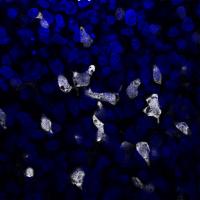 Two recent studies have revealed for the first time how to to generate insulin producing cells, that resemble normal beta cells, in the lab from human pluripotent stem cells. This provides a step forward for a potential cell therapy treatment for diabetes. But how alike are these cells to the beta cells found in our bodies? How close are we to testing these cells in diabetics? And what other questions still remain? In this commentary, Henrik Semb tackles these questions providing perspective in this complex and challenging field.
Two recent studies have revealed for the first time how to to generate insulin producing cells, that resemble normal beta cells, in the lab from human pluripotent stem cells. This provides a step forward for a potential cell therapy treatment for diabetes. But how alike are these cells to the beta cells found in our bodies? How close are we to testing these cells in diabetics? And what other questions still remain? In this commentary, Henrik Semb tackles these questions providing perspective in this complex and challenging field.
Interview with Henrik Semb: the pancreas, beta cells and diabetes
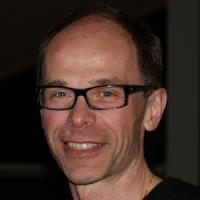 Professor Henrik Semb is the director of the Danish stem cell center. His research group focuses on how organs are formed and cells acquire their fates in vivo. In particular, they are interested in how processes such as cell shape changes, movement and polarity, not only affect 3D architecture of the developing organ but also what type of cells are made. In vivo findings from their lab have given insight into coaxing human pluripotent stem cells into functional insulin-producing beta cells as a source for therapy in type 1 diabetes.
Professor Henrik Semb is the director of the Danish stem cell center. His research group focuses on how organs are formed and cells acquire their fates in vivo. In particular, they are interested in how processes such as cell shape changes, movement and polarity, not only affect 3D architecture of the developing organ but also what type of cells are made. In vivo findings from their lab have given insight into coaxing human pluripotent stem cells into functional insulin-producing beta cells as a source for therapy in type 1 diabetes.
Cell replacement therapies: iPS technology or transdifferentiation?
The ability to convert one cell type into another has caused great excitement in the stem cell field. Two main techniques exist: one reprograms somatic cells into pluripotent stem cells (iPS cells), the other converts somatic cells directly into other types of specialized cells (transdifferentiation). These techniques raise high hopes that patient-personalized cell therapies will become a reality in the not-so-distant future.
2014 Stem Cell Person of the Year – Masayo Takahashi
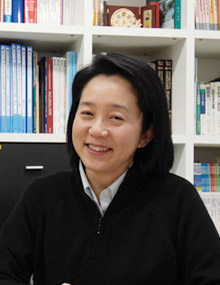 EuroStemCell would like to offer its warm congratulations to Dr Masayo Takahashi, winner of the Stem Cell Person of the Year 2014. This international award is facilitated and funded by Professor Paul Knoepfler, in recognition of people who are transformative in the stem cell field for the benefit of others.
EuroStemCell would like to offer its warm congratulations to Dr Masayo Takahashi, winner of the Stem Cell Person of the Year 2014. This international award is facilitated and funded by Professor Paul Knoepfler, in recognition of people who are transformative in the stem cell field for the benefit of others.
Stem cell transplants for Parkinson’s disease edging closer
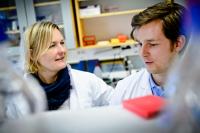 A major breakthrough in the development of stem cell-derived brain cells has put researchers on a firm path towards the first ever stem cell transplantations in people with Parkinson’s disease. A new study presents the next generation of transplantable dopamine neurons produced from stem cells. These cells carry the same properties as the dopamine neurons found in the human brain.
A major breakthrough in the development of stem cell-derived brain cells has put researchers on a firm path towards the first ever stem cell transplantations in people with Parkinson’s disease. A new study presents the next generation of transplantable dopamine neurons produced from stem cells. These cells carry the same properties as the dopamine neurons found in the human brain.
Study reveals the genesis of brain cells that degenerate in Huntington’s disease
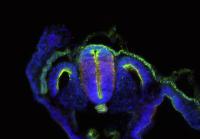 Elena Cattaneo reports on recent research that examines how a particular type of cell develops in the human brain, and how studies like this fit into the overall picture of research collaboration and funding, in Italy and in Europe.
Elena Cattaneo reports on recent research that examines how a particular type of cell develops in the human brain, and how studies like this fit into the overall picture of research collaboration and funding, in Italy and in Europe.
It took 4 years of continuous experiments of 17 researchers from 6 groups in 2 European countries to understand more about how cells develop in the striatum. The striatum is the area of the brain that degenerates in Huntington’s disease (HD) – a neurological disorder that as of today, has no cure. This work, led by my group at the University of Milan, was published in Nature Neuroscience on 10 Nov 2014.
Capturing the primordial human stem cells in the lab
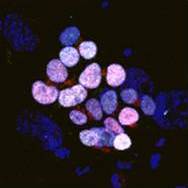 Researchers at the University of Cambridge have discovered a method to “reset” human embryonic stem cells to an earlier developmental stage, producing a type of stem cell up to now only seen in rodents.
Researchers at the University of Cambridge have discovered a method to “reset” human embryonic stem cells to an earlier developmental stage, producing a type of stem cell up to now only seen in rodents.
Debating Science Issues 2015 Competition Open for Applications
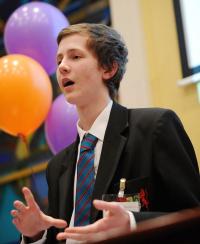 In conjunction with Ireland’s Science Week, Debating Science Issues (DSI) is being launched with an upper secondary school workshop series. The schools’ science programme, now in its eighth year, invites young people to engage in debate on the cultural, societal and ethical implications of advances in biomedical science.
In conjunction with Ireland’s Science Week, Debating Science Issues (DSI) is being launched with an upper secondary school workshop series. The schools’ science programme, now in its eighth year, invites young people to engage in debate on the cultural, societal and ethical implications of advances in biomedical science.
Although the workshop phase of DSI is under way, several partners are still recruiting schools. The pre-competition workshops provide an open and impartial environment and challenge the students to consider the ethical impacts of contemporary research. After the school workshop, students work with their team and under their teacher’s supervision to prepare for a debate competition involving more than 36 schools across Ireland to determine the 2015 All-Ireland winners. Debate adjudicators represent various stakeholders including science, communications/ journalism, religion, medicine, ethics, patients, and interested publics.
Origin of Life: stem-cell exhibition in Lausanne
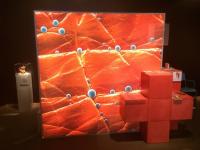 Much of what many people still regard as science fiction is already happening in pilot projects in laboratories all around the world today: printing ears, producing blood and muscles and reconstructing a food pipe using the body’s own tissue. Science has achieved rapid progress in this field in recent years – and the population at large has scarcely noticed it. What is coming next? An entire heart?
Much of what many people still regard as science fiction is already happening in pilot projects in laboratories all around the world today: printing ears, producing blood and muscles and reconstructing a food pipe using the body’s own tissue. Science has achieved rapid progress in this field in recent years – and the population at large has scarcely noticed it. What is coming next? An entire heart?


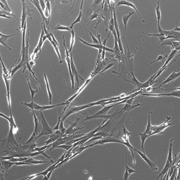
 (1 votes)
(1 votes)